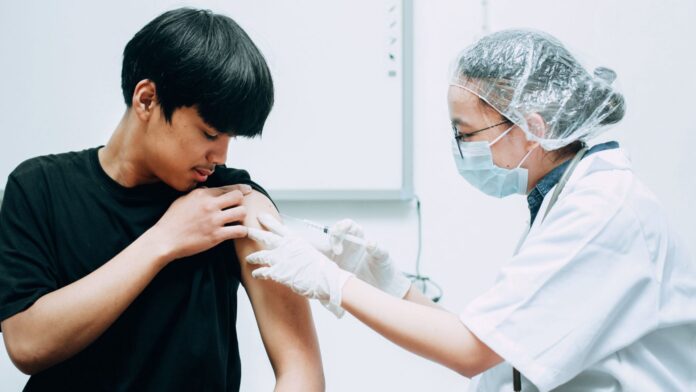The Philippines is moving closer to its target average inoculation rate of half a million as more vaccines are coming in, National Task Force (NTF) Against Covid-19 Deputy Chief Implementer and testing czar Vince Dizon said on Thursday.
Dizon said the Philippines administered 353,000 jabs on Wednesday, the highest one-day tally so far and above the 250,000 daily average.
“That is really an achievement. The days where we were hitting less than a hundred thousand are behind us and I think with the added bulk of vaccines, the additional vaccine doses that are coming in, of which 2 million Sinovac (doses) arrived this morning, the number that we reached yesterday will only get higher and higher in the coming weeks,” he said in a media briefing at the Lakeshore vaccination hub in Taguig City.
Dizon also thanked the visiting Israeli health experts for assisting the country to improve its pandemic response.
“As we get more arrivals and deliveries of the vaccines and as we continue to improve our processes, with the help of our advisers from Israel, this will continue to improve,” he said. “You have to understand that the jab rate is largely dependent primarily on supply.”
The National Vaccination Operations Center also helps out local government units, particularly those in priority areas, to make the vaccination process more efficient, he said.
“That has resulted in a tremendous increase in our capacity in the last two, three weeks,” Dizon said.
Vaccine prioritization
Dizon also said more cities outside the National Capital Region Plus 8 (Cavite, Laguna, Pampanga, Batangas, Rizal, Bulacan, Metro Davao, and Metro Cebu) will be added under the government expanded strategies on vaccination.
Among the other areas that will be prioritized for vaccine allocation are Iloilo, Cagayan de Oro, Bacolod, Zamboanga, Baguio, and other areas outside Metro Cebu like Talisay and Minglanilla.
“These areas based on the strategies of focus and expand are the densest areas in the country or urban areas, the highly urbanized cities. Why? Because they have the highest risk of getting infections because they are densely populated, people live and work very close to each other unlike in rural areas where people live houses apart,” Dizon explained.
They are also urban areas that have large contributions to the economy, he said.
“We will expand that once there are more vaccines that arrive and that will be happening in the next few weeks,” he said.


